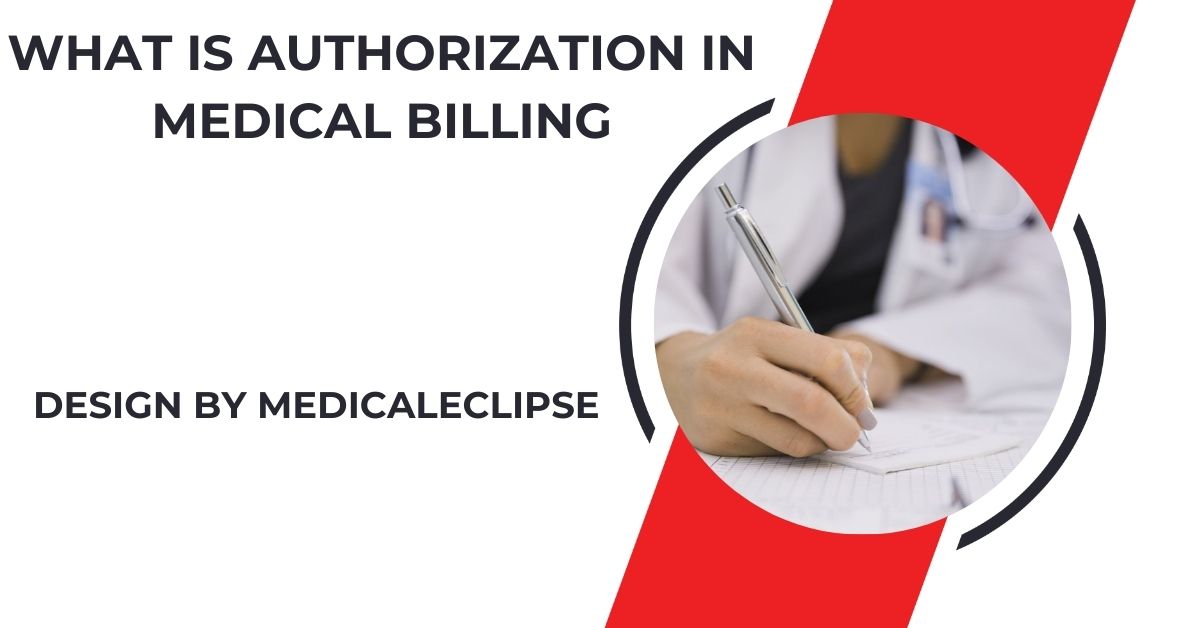Authorization in medical billing is the process of getting insurance approval before providing healthcare services to ensure they are covered and medically necessary.
In this article, we’ll explore what authorization in medical billing entails, why it’s necessary, how the process works, and the challenges involved.
What is Authorization in Medical Billing?

In the context of medical billing, authorization (also known as prior authorization or pre-authorization) is the process of obtaining approval from an insurance provider before delivering certain healthcare services or procedures. This approval confirms that the proposed treatment is medically necessary and that the insurance company agrees to cover some or all of the associated costs.
For example, if a physician prescribes an MRI scan, they must first get authorization from the patient’s insurance provider to ensure the scan will be covered. Without authorization, the insurance may deny the claim, leaving the patient responsible for the full cost.
Why is Authorization Necessary?
Insurance companies use the authorization process to control healthcare costs and ensure that treatments provided are medically necessary. Authorization helps:
- Reduce Unnecessary Treatments: It prevents patients from receiving treatments that might not be effective or needed.
- Control Healthcare Costs: By approving only necessary services, insurers can limit unnecessary spending.
- Improve Quality of Care: Authorization can lead to a more targeted approach to treatment, where only the most suitable options are pursued.
Types of Authorization in Medical Billing:
Prior Authorization (Pre-Authorization):
This is the most common form of authorization, where approval is sought before a service or procedure. Prior authorization is often required for specialized imaging, elective surgeries, high-cost medications, and certain therapies. Without prior authorization, the insurance provider may refuse to pay for the service.
Concurrent Authorization:
Concurrent authorization is used for ongoing treatments, like extended hospital stays or continued use of physical therapy. It ensures that a patient still requires the ongoing service or care before further approval. The process may involve frequent reviews by the insurance provider to confirm the necessity of continued treatment.
Retroactive Authorization:
Retroactive authorization occurs after the service has been provided, typically when prior authorization was missed. While insurance companies may sometimes grant retroactive authorization, it’s not guaranteed, and approval depends on the circumstances and the provider’s policies.
The Authorization Process in Medical Billing:

The authorization process typically involves several key steps, which can vary slightly depending on the insurance provider and the type of healthcare service:
- Request Submission: A healthcare provider submits an authorization request to the insurance company, including details such as the patient’s diagnosis, recommended treatment, and justification for the treatment.
- Insurance Review: The insurance provider reviews the request to evaluate if the service is medically necessary. This often involves comparing the proposed treatment with clinical guidelines and standards.
- Approval, Denial, or Request for More Information: The insurance company either approves the request, denies it, or asks for additional information to clarify the medical necessity of the treatment.
- Appeal Process (if Denied): If authorization is denied, the healthcare provider or patient may appeal the decision. This involves resubmitting the request with additional information or justification to support the need for the service.
How Long Does the Authorization Process Take?
The time frame for authorization can vary based on the insurance provider, the urgency of the procedure, and the complexity of the case. Routine authorizations may take 24 to 72 hours, while urgent cases may be expedited. Complex cases, however, may take longer, especially if additional documentation is required.
Common Challenges with Authorization in Medical Billing:
The authorization process is often complex and may pose challenges for both healthcare providers and patients. Here are some common obstacles:
Also Read: Is Working With Autistic Kids Good For Medical Field – Autism Expertise in Healthcare!
Time-Consuming Process:
Authorization requires significant administrative time and resources, and delays can lead to postponed treatment. This can be especially problematic in urgent care situations where timely access to services is crucial. Streamlining this process can enhance care delivery by reducing wait times for essential treatments.
High Rate of Denials:
Insurance providers may deny authorization for various reasons, such as insufficient documentation, lack of medical necessity, or failure to follow the correct procedures. Denials can create additional workload, as providers must appeal or resubmit claims. Reducing denials through improved documentation can save time and resources.
Variation Across Insurers:

Each insurance company has its own set of guidelines and criteria for authorizing services, making it difficult for healthcare providers to navigate the process consistently. Standardizing authorization requirements could help simplify the process across insurers.
Patient Dissatisfaction:
Delays and denials in the authorization process can lead to frustration for patients, who may face unexpected medical bills if their insurance does not cover a service. Clear communication with patients can help manage expectations and reduce dissatisfaction.
How to Streamline the Authorization Process:
Given the challenges, healthcare providers and billing professionals can take steps to streamline authorization in medical billing:
- Use Electronic Health Records (EHR): EHR systems often have integrated authorization tools that automate parts of the process, reducing manual errors and improving efficiency.
- Stay Informed on Insurance Policies: Each insurer may update policies and requirements frequently. Staying informed helps reduce denials due to procedural errors.
- Work with Experienced Billing Professionals: Trained billing staff or third-party services can handle the complex details of authorization and appeals, reducing errors and improving turnaround times.
- Educate Patients: Informing patients about the authorization process can manage expectations and reduce confusion or dissatisfaction if delays or denials occur.
FAQ’s
- What is authorization in medical billing?
Authorization is the process of obtaining insurance approval before providing healthcare services to ensure they are medically necessary and covered.
- Why is authorization necessary in medical billing?
Authorization controls healthcare costs, prevents unnecessary treatments, and ensures only medically necessary services are covered by insurance.
- What are the types of authorization?
The types include prior authorization (pre-authorization), concurrent authorization for ongoing treatments, and retroactive authorization for missed prior approval.
- How long does the authorization process take?
It typically takes 24 to 72 hours for routine cases, but urgent or complex cases may take longer depending on documentation and insurer policies.
- What are common challenges with authorization?
Challenges include time-consuming processes, high denial rates, variation across insurers, and patient dissatisfaction due to delays or denials.
Conclusion
Authorization in medical billing ensures insurance coverage for medical treatments and services. Although complex and time-consuming, it promotes cost-effective, necessary care. Understanding this process benefits both providers and patients by preventing unnecessary expenses, improving efficiency, and ensuring timely access to needed services. Proactively managing authorizations enables healthcare providers to focus on delivering quality patient care.

Leave a Reply